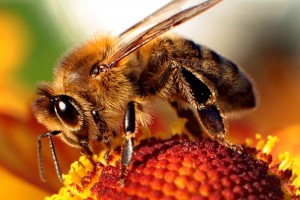Our president, Duncan Allison, continues his series of insights into the national and world ag scene.
FARMING NOTES – JUNE 2014 DAA 6/25/2014
Agriculture and food waste – careless abundance. We are wasting between 31% (USDA) and 40% (NRDC) of our food. The situation has been getting worse – 20% in 1977, 27% in 1997 and possibly as much as 40% today. Recent 2014 USDA report “In 2010, an estimated 133 billion pounds of food from U.S. retail food stores, restaurants, and homes never made it into people’s stomachs. The amount of uneaten food in homes and restaurants was valued at almost $390 per U.S. consumer in 2008, more than an average month’s worth of food expenditures.” “The United States enjoys the most productive and abundant food supply on earth, but too much of this food goes to waste,” said Secretary Vilsack. After recycling, food waste at 21% is the biggest component of landfills with a price tag of about $1.3 billion. The implications for agriculture, our water supply and environment are significant. Think of all those precious resources that are being used to end up in landfills. “Food loss represents significant amounts of money and other resources invested in food production, including land, fresh water, labor, energy, agricultural chemicals (e.g., fertilizer, pesticides), and other inputs to produce food that does not ultimately meet its intended purpose of feeding people” (Buzby et al., 2011).
The culture of abundance and apathy in our environment has to change if we are to reverse these deeply disturbing trends. Steven Finn, University of Pennsylvania concluded his talk at the recent Keep Farming First meeting at Octorara Middle School on June 18th with several examples of how communities are making use of surplus food so it is used to feed the needy. He provided lots of food for thought and left us with the clear message that the current situation is not sustainable. We can all help by only buying what we need but there have to be societal changes for real change. Why should we be stressing our precious water supplies and good land to produce more food than is really needed?
Neonicotinoids – impact or not on bees? This is another example of the difficulty of understanding the truth with the widely differing press reports. BBC News 6/23 “Neonicotinoid pesticides are causing significant damage to a wide range of beneficial species and are a key factor in the decline of bees, say scientists. Researchers, who have carried out a four-year review of the literature, say the evidence of damage is now “conclusive”. The scientists say the threat to nature is the same as that once posed by the notorious chemical DDT. Manufacturers say the pesticides are not harming bees or other species” Recent USDA statement 6/20 included the following: “Pollinators contribute substantially to the economy of the United States and are vital to keeping fruits, nuts, and vegetables in our diets. Honey bee pollination alone adds more than $15 billion in value to agricultural crops each year in the United States. Over the past few decades, there has been a significant loss of pollinators, including honey bees, native bees, birds, bats, and butterflies, from the environment. The problem is serious and requires immediate attention to ensure the sustainability of our food production systems, avoid additional economic impact on the agricultural sector, and protect the health of the environment… Pollinator losses have been severe…Scientists believe that bee losses are likely caused by a combination of stressors, including poor bee nutrition, loss of forage lands, parasites, pathogens, lack of genetic diversity, and exposure to pesticides…Given the breadth, severity, and persistence of pollinator losses, it is critical to expand Federal efforts and take new steps to reverse pollinator losses and help restore populations to healthy levels….Mission and Function of the Task Force. Within 180 days of the date of this memorandum, the Task Force shall develop a National Pollinator Health Strategy (Strategy), which shall include explicit goals, milestones, and metrics to measure progress.”
Obviously much work is underway in the public and private sectors to determine what role neonicotinoids might be playing in affecting bees and pollinators. Let’s wait for a full review and some solid data before blaming the neonicotinoids which are so widely used for seed treatment and for insect control in many other crops.
Vaccine for Porcine Epidemic Diarrhea Virus (PEDv) – This highly contagious swine disease only entered the US in April 2013 but has since spread to nearly 30 states and throughout North America causing the death of millions of piglets. Truly devastating to the industry. Luckily Harrisvaccines has been granted a USDA conditional license for their vaccine so that the company can sell the vaccine directly to veterinarians and swine producers. Incredibly rapid response by Harrisvaccines who already supply other vaccines using their special SirraVaxSM technology. The wonders of new technology and science!
American Farm Bureau fights the new EPA rule. The proposed rule “will illegally expand the reach of EPA to millions of acres of once-unregulated farm land, exposing farmers to fines and penalties for ordinary farming activities…Farmers face an impossible choice… The proposed rule that expands jurisdiction and the interpretive rule together are a bad idea that threatens livelihoods as well as local land-use and zoning authority. It’s time to ditch this rule.” The Clean Water Act of 1972 protects the nation’s waters and Congress gave states, not the EPA, the primary responsibility to oversee land use. The Farm Bureau and other farm and industry groups are fighting this rule.
Consumers consistently under rate the role of farm families – The results of two recent quizzes at Sheep and Wool Day and Octorara BEST Day people very rarely circled 96% as the correct percentage of farm ownership in the US. “Oh that’s surprising!” “Didn’t think it was that high!” Few knew dairy cows gave on average 6.7 gallons of milk a day. More next time!

